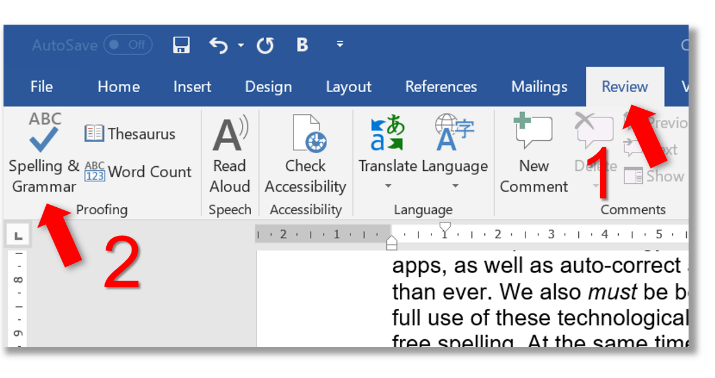In the first article of this series ‘What is Find and Replace? And Why You Should Be Using It’, you were oriented to the Find and Replace dialogue box and the many options at your disposal when creating a Find and Replace search. These next articles carry this theory over into practical examples, which together serve to demonstrate the usefulness of the Find and Replace function for any author or editor.
Replace Multiple Spaces with a Single Space
Imagine, you have been working hard on your document, moving text around, adding and deleting sentences; spacing issues are bound to enter your document. A very common spacing issue is having multiple character spaces where there should only be one. With Find and Replace, this is an easy fix. In the Find what box, type two spaces. In the Replace with box, type one space. Choose Replace All. Your document is now free of those unwanted extra spaces.
Change Straight Apostrophes to Curly Apostrophes
Another common issue in documents that have been cut and paste, or that have had text pasted into them from other documents, is that some apostrophes and quotation marks are appearing straight (‘) rather than curly (’).
To fix this, simply type an apostrophe into both the Find what and Replace with box and choose Replace All. This will find all apostrophes and single quotation marks and replace them with an apostrophe or single quotation mark, with the result that any that were straight will automatically be made curly.
Note: If your apostrophes are not being automatically made curly, you will need to update your AutoCorrect options to ensure that ‘smart quotes’ is ticked.
Insert a Special Character
It is quite common for authors in a hurry to neglect to insert necessary special characters (e.g. accents and diacritics in author names, or the correct non-breaking space in equations) or to have done so inconsistently. As shown in the previous article in this series, some of the most commonly used special characters are listed as options under More > Special.
For other special characters that are not on this list, you will need to paste them into the search boxes. This means you will need to navigate to where they have been used in your text and copy and paste. Or, you will need to type the characters into a new Word document, and then copy and paste them from there.
For example, if you want to search for the Euro symbol, but you do not have this symbol on your keyboard, you will need to copy and paste that symbol into your Find what box. You can also copy and paste in some of the special characters listed under More > Special, such as the en and em dashes and the non-breaking hyphen and space.
Apply a Style to Specific Text
For authors who must often refer to specific texts in their work, it is necessary to check that the text’s name is appropriately italicised throughout the document. Find and Replace makes this easy, using the Format options under More.
- In the Find what box, type the words you want to search for (e.g. Style Manual for Editors and Printers). Under More > Format > Font, make sure italics is cleared. Clicking out of the formatting options, underneath the Find what box you should see the words ‘Not italics’.
- In the Replace with box, type the same words, but in Format > Font make sure italics is ticked. You should now see ‘italics’ under the Replace with box.
- Replace (or Replace All if you know you do not need any instances left in roman font).
As a shortcut to going into Format > Font, you can use Ctrl + I (the normal shortcut for italics) to toggle between Italics/Not Italics.
Maintain Consistency in a Document
In the previous article in this series some examples of consistency checks were given (e.g. changing ‘organization’ to ‘organisation’, and ‘Jorgenson’ to ‘Jørgenson’). When implementing your style sheet (as a writer or editor)—which we suggested you use in our article ‘How to Use a Style Sheet Effectively’—there will be a wide range of checks you need to conduct using Find and Replace. For many of these, refining your search using the options under More will help to speed things up.
For example, when checking the consistency of your presentation of statistics in your document, you might want to search for all instances of ‘r’ and ‘n’, to check that these are capitalised, italicised and punctuated correctly. In this case, using ‘Find whole words only’ to limit your search to only instances of ‘r’ or ‘n’ on their own (rather than as parts of words). In the Replace with box, set the desired format for the replacement text. Note that you may need to manually fix any capitalisation issues.
How to Learn More
The examples above are only the smallest fraction of what is possible using Find and Replace. For additional examples, see the next article in this series—’What You Can Do with Find and Replace: Part II‘. You can read the Word tutorials and fascinating WordTips website, enrol in a course (for editors in particular), or check out Jack Lyon’s easy-to-use Wildcards cookbook (which helps you to transition from basic to advanced Find and Replace use).





